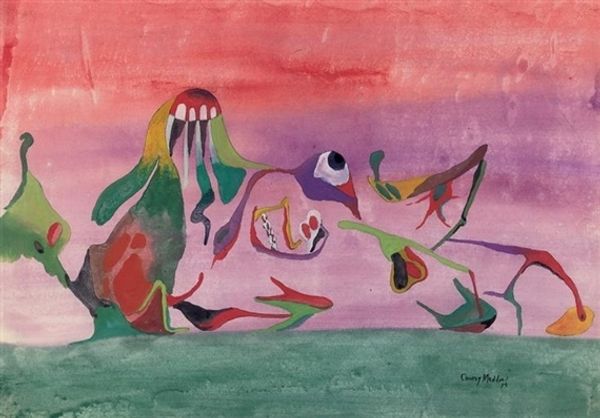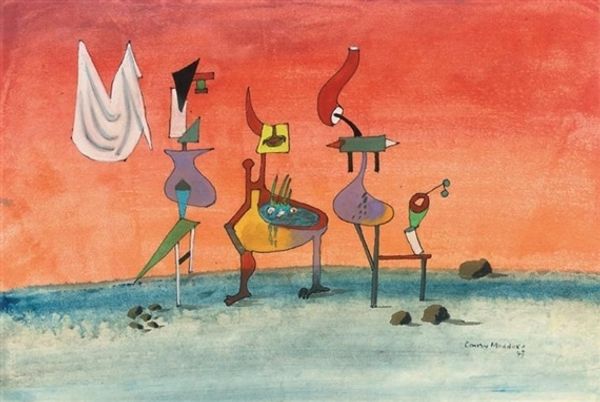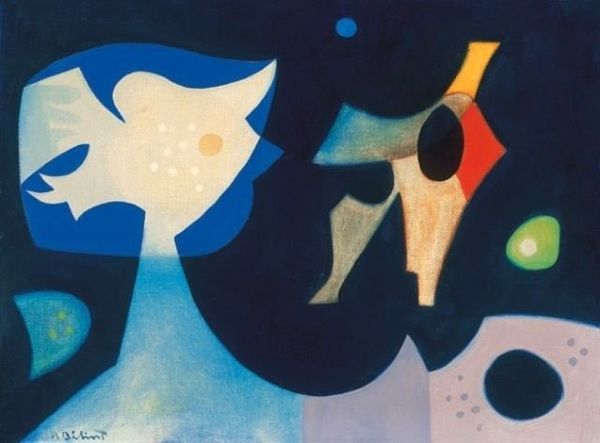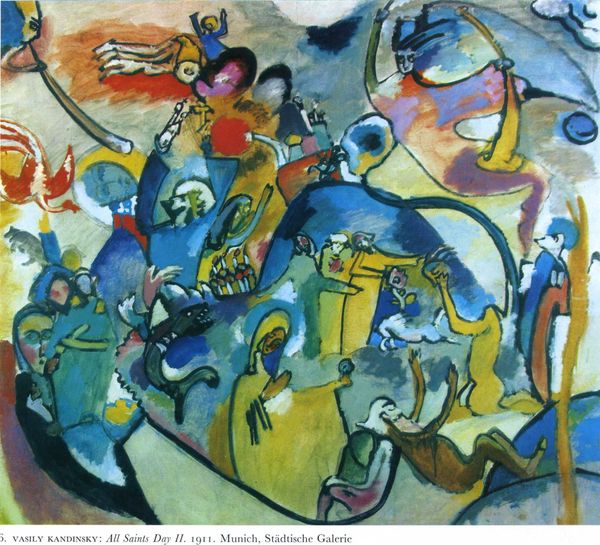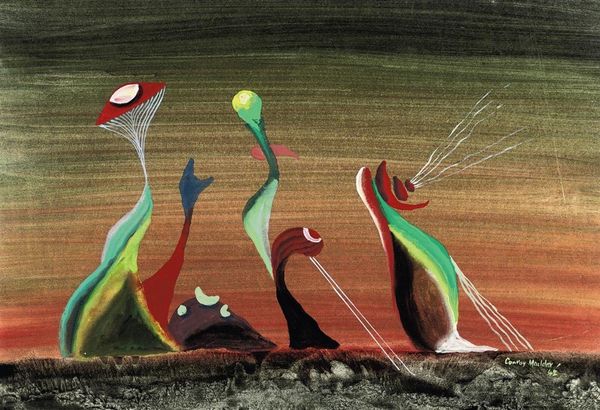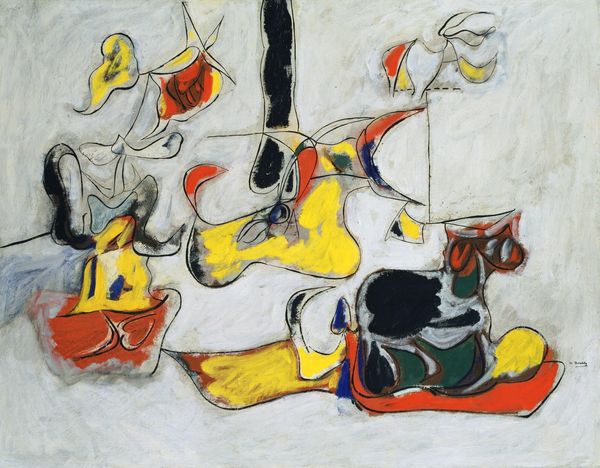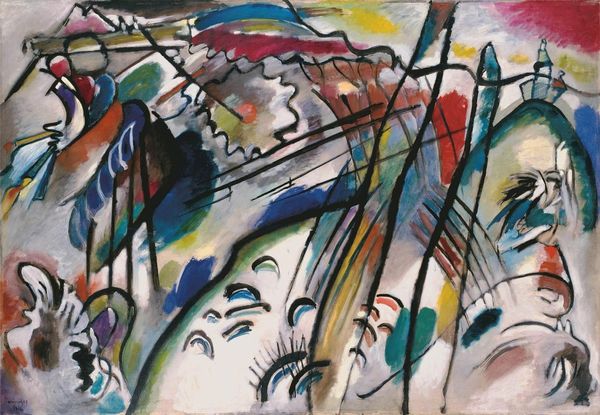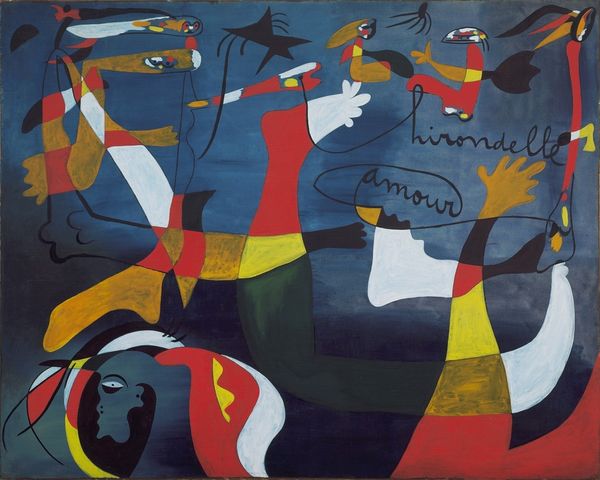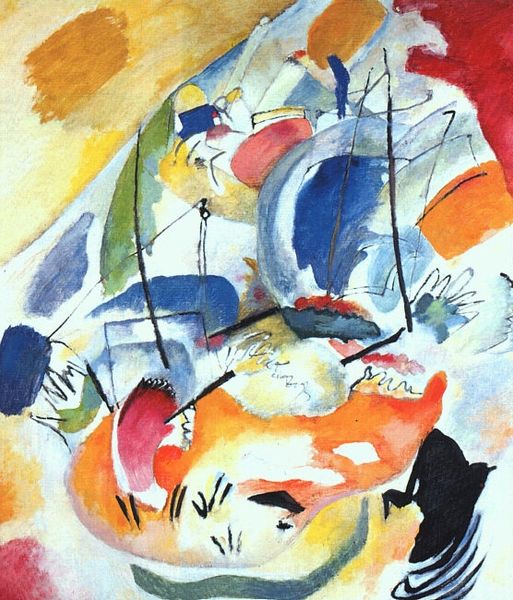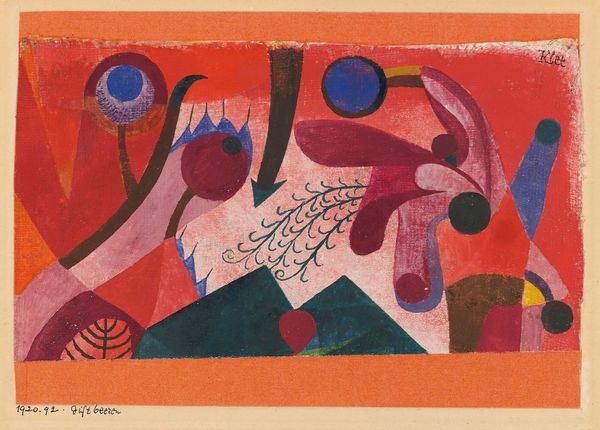
painting, watercolor
#
abstract painting
#
painting
#
fantasy-art
#
watercolor
#
abstract-art
#
abstraction
#
watercolour bleed
#
watercolour illustration
#
surrealism
#
watercolor
Copyright: Conroy Maddox,Fair Use
Curator: The watercolor piece before us is Conroy Maddox’s "Cabinet des Merveilles," created in 1941. What is your initial take on it? Editor: Well, right away I’m struck by the aquatic feeling it evokes. The blue wash background feels like looking through water, maybe a dreamlike seascape. And the shapes! They’re intriguing, hinting at objects but never fully resolving into anything concrete. Curator: It's interesting you picked up on the aquatic aspect, because if we look closely, we observe how Maddox achieved this effect. Notice the watercolor bleed, a technique exploited by Maddox, adding an ethereal depth to the piece, almost like viewing it through a disturbed body of water. Also, I find that Maddox, along with other Surrealist artists, challenged conventional painting norms during times of social upheaval. He repurposed the readymade imagery of newspapers, journals, and books, so his art and his choice of materials mirror the chaotic world that was already at his doorstep. Editor: Indeed. If we shift our focus toward the painting's composition and internal relations, there's a real push and pull at play here. There is a tension between recognizable forms that promise us a clear figure and ground—for example, what seems to be the pillar on the bottom left corner, it holds everything, it grounds the piece, yet immediately disperses upward to lose all material form. And then that nebulous "background"... it challenges our spatial perception, doesn't it? Curator: Exactly. Maddox lived and produced through World War II, and this is perhaps not a ‘seasacpe’ at all, but the result of trauma on identity itself. By challenging familiar objects and forms through the act of fragmentation and assemblage, Maddox deconstructs conventional perspectives, aligning it to the psychological dimensions of that time. It shows us the degree to which his materials and methods shaped how he presented that fractured reality to the audience. Editor: Absolutely. Seeing it that way casts the colors in a new light. The vividness and intensity speak less to buoyancy and more to an attempt to capture fleeting thoughts. Those color relationships and their juxtapositions evoke strong but indefinite feelings; this, alongside with its compositional strategy, give the painting such an affective appeal. Curator: In a nutshell, Maddox gives his audience an insight into his experience, using Surrealism as a critical form that uncovers truths in everyday objects as the world rapidly changed during WWII. The ready-made fragments are an intimate lens into this transitional and violent period in human history, using watercolor illustrations and experimental, almost childlike forms to express themes and ideas that escape simple expression. Editor: Well, I initially responded to its serene palette. Yet, understanding its techniques and the wider contexts opens it up— it does evoke turmoil, it seems I read its visual lexicon far too safely. Curator: And perhaps, Maddox's "Cabinet des Merveilles" offers a space where these emotions, experiences and memories can co-exist.
Comments
No comments
Be the first to comment and join the conversation on the ultimate creative platform.
